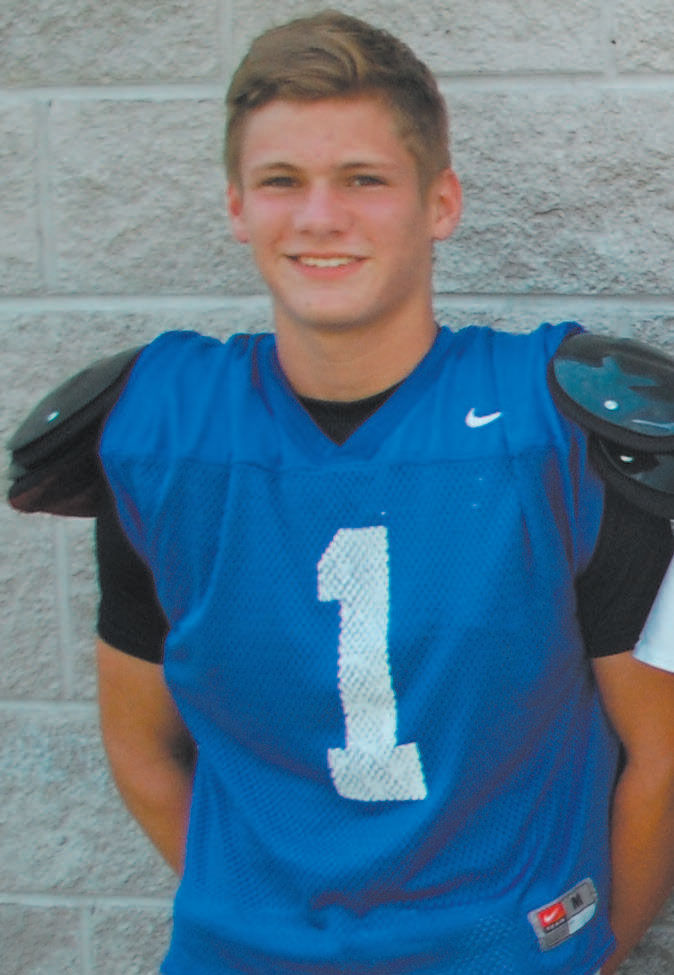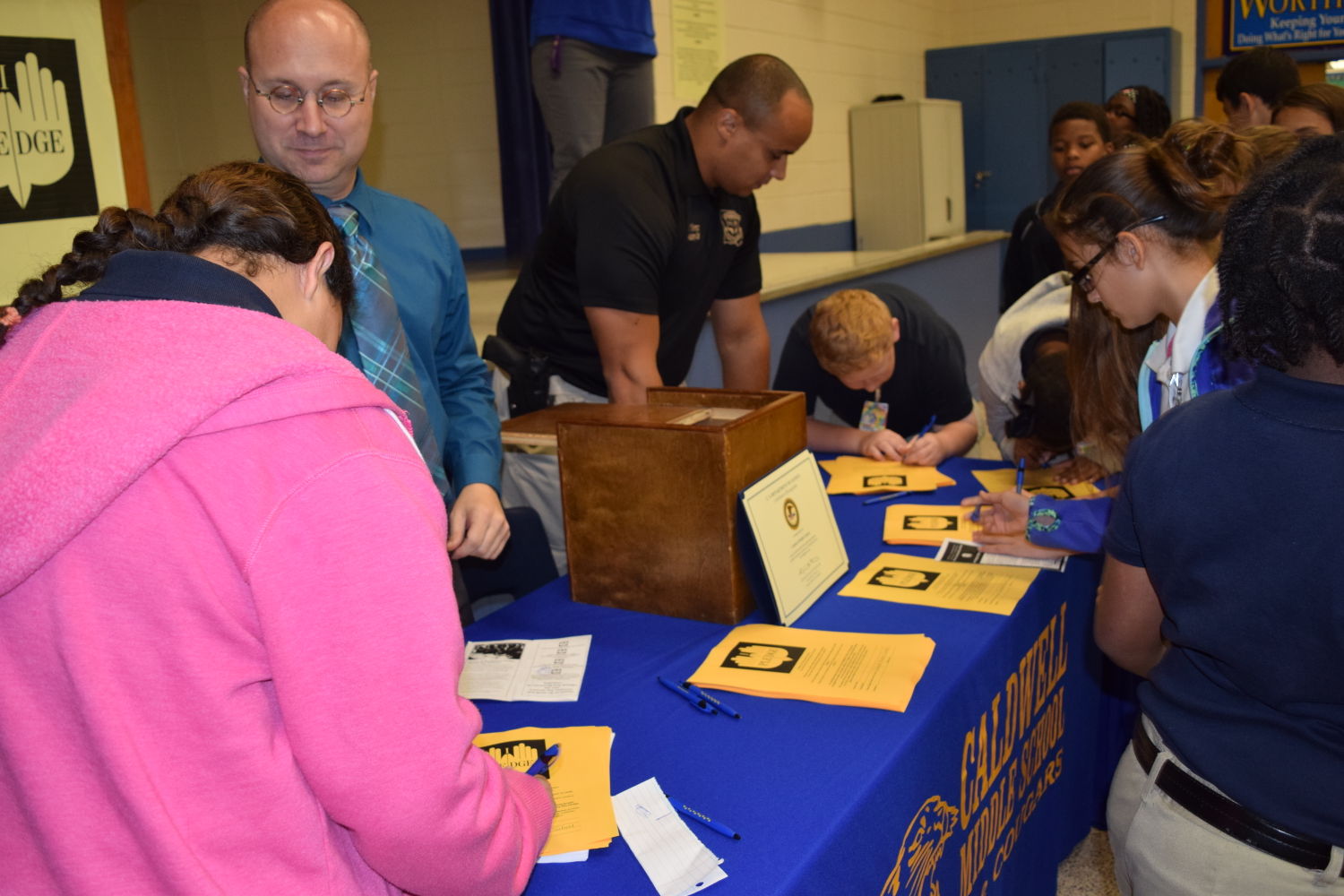
PLAYER OF THE WEEK
November 11, 2015
Terrebonne sheriff’s federal grant records questioned
November 11, 2015They were parked for a half-mile on either side of La. Highway 311 and even in the cane fields, mourners drawn to a small, simple church whose timeworn cemetery awaited the remains of a star-crossed Houma teenager they had come to mourn.
The services Saturday for Corey “Bug” Butler, cut down Oct. 28 in a Morgan Street gunfight that left three other young men wounded – one paralyzed – reflected a burgeoning paradox of loyalty to time-honored values of church and community challenged by the lure of street status and hip-hop cool.
Community leaders say the Morgan Street incident and other violent Terrebonne Parish episodes resulting in death and injury must be stopped, amid an increasing recognition that aggressive law enforcement tactics – while necessary – must be coupled with other resources.
“We have to call it for what it is, the violence, the drug dealing,” said Terrebonne Parish Councilman John Navy. “We don’t have the large population that these larger cities have but have the capability of a growing problem per capital, if no intervention is done and there are no resources. The problem will spill over not just in our high crime areas, but our other neighborhoods will also feel the effects. Drugs have no racial make-up, no socio-economic boundaries, no religious barriers and no education limitations.”
Houma Police Chief Dana Coleman, who attended Butler’s funeral at Christ Missionary Baptist Church, points to the tremendous risk that incidents like the Morgan Street shooting pose.
“A little before that happened children were coming home from school, there are people on porches, people walking on the street,” said Coleman, whose detectives are still investigating the case, which he acknowledged involves blurred, sometimes shifting lines separating victims from victimizers.
“Through investigation we have determined multiple weapons were used,” Coleman said. “Our detectives are still in the process of interviewing witnesses and gathering evidence.”
Butler was with at least one friend on the 400 block of Morgan Street when allegedly accosted a little before 4:30 p.m. on the 28th by Elward Williams, 21, and Anthony Sylvester, 24, both of whom were known to him. After being slapped by Sylvester, Butler is said to have pulled a gun and fired; Multiple shots were fired at Butler. Another acquaintance, Maurice Banks, and an 18-year-old whose street name is “Vez” were both wounded. Criminal charges against Banks are under evaluation by prosecutors.
Charged with second-degree murder, Sylvester languishes, paralyzed, at University Hospital in New Orleans. When Sylvester is released from the hospital, Terrebonne Parish authorities have confirmed, he will be placed in the custody of the Louisiana Department of Corrections, because the local jail does not have the equipment, facilities or staff to deal with his injuries.
Williams was also arrested on a charge of second-degree murder.
Banks is no stranger to violence, and was charged with attempted murder in connection with a 2011 shooting at Al’s Trailer Park. His charge was reduced to illegal use of a weapon, to which he pleaded guilty, receiving a sentence of one year.
In the aftermath of the shootings, mentors already volunteering time to work with youngsters in schools and neighborhoods are seeking to increase their reach, hoping to overcome the lure reflected through social media networks rife with glorification of the language and imagery of streets in larger, deadlier places.
They, along with civic leaders, say the threat necessitates increased resources and tools.
The incident has drawn the attention of not only local, but also federal authorities, promising to help the parish with connections to programs that help suppress youth gun violence.
“There are resources, things that can aid decision making and conflict resolutions,” said Kenneth Polite, U.S. Attorney for the Eastern District of Louisiana, who if familiar with the incident that left Butler dead and three other young men wounded.
Already scheduled to visit a Schriever middle school last week to administer an anti-gun violence pledge to students, Polite said resources might include the Department of Justice’s Community Relations Service, which quietly aids communities in conflict behind-the-scenes; Project Safe Neighborhoods is a U.S. Department of Justice program that helps with protocols and personnel from federal agencies that include the Bureau of Alcohol, Tobacco and Firearms.
Polite said his staff has close ties to local law enforcement officials so a means for networking is already in place. But his office welcomes contact from other community voices as well.
Nearly a dozen researchers and community advocates in half as many states were interviewed last week, for input on what Terrebonne Parish can do to meet the violence threat. Most agreed that the parish’s current course – winning young minds way before high school through mentors and positive role models – is an essential investment in the future.
Getting young people to buy in through positive reinforcement, by listening rather than lecturing, is considered a key element to success.
“You can’t clean a fish until you catch it,” said Hope Encalade, a New Orleans woman who plays an integral role in that city’s “Each One Save One” program, part of a larger network for addressing youth violence called “NOLA for Life.”
The biggest challenge, Encalade agrees, is being able to attract young people to the help they may need, but initially reject.
Leaders of programs with proven track records caution that continuity – the presence of specific men forging bonds with specific youngsters, even in the group setting, is a necessary ingredient for success.
Teens at greatest risk often come from homes, advocates said, where dominant males have already come into their lives and then abandoned them, whether through prison, death or separation from the household.
“The most important thing is for you to not give up on them,” Encalade said. “They are going to test you and try you and say you didn’t care.”
Among mentoring networks praised in cities where they operate is the 100 Black Men program.
Active in Baton Rouge, New Orleans and in St. Mary Parish, the program is based on four key pillars.
Mentoring, education, health and economic development are the foundation, said Baton Rouge chapter director Michael Florian.
“We go out and look for young people in middle school, and the idea is to start with them in that middle school and keep them with us throughout,” Florian said. “We don’t do individual mentoring, it’s group mentoring. What is needed is someone who looks like them, a good, decent man who goes to work every day and takes care of his family, who deals with the toils that life has to offer every day without leaving and without hitting somebody.”
Despite its name, the organization encourages men of all races to participate, and makes services available to all young men.
Whatever approach is taken to socially engineer safety and dull the allure of the streets, experts agree, must be multi-faceted, with the involvement not only from volunteers, law enforcement and schools, but also hospitals, recreation districts and even private enterprise.
Dr. Philip Leaf, director of the Center for the Prevention of Youth Violence at Johns Hopkins University in Baltimore, says solutions must address the complex web of life challenges and practical elements of survival that to disadvantaged youngsters may seem impossible to scale.
“There may be a couple of people who are never going to change their behaviors and they need to be removed from credibility,” said Leaf, explaining how the attraction of life-changing programs needs to be more credible than the easy-money, easy-solutions myth that street culture glorifies. “We have to look at where the funding comes from to replace the illegal income.”
Overcoming a philosophy that says “why do I need to be thinking in the long term when I am not going to live or I will be in jail” is a tall order, he acknowledges.
Effective development of community leadership from the street level, interviews with Leaf suggest, can bring attempts to target those seemingly already lost to the street a greater chance of success in some places.
“Showing the community does care, to start rectifying structural problems, racial issues or other things putting people at a disadvantage can show ‘maybe they are serious, maybe they do have some understanding,’” Leaf said. “Why would we think the 18 or 20-year-old would fix the problem when they didn’t create it?”
A powerful message for those already at risk, Leaf and other experts suggest, is how more positive behavior can save the coming generation from risking injury, death or incarceration, while also acknowledging that there is no silver bullet, no panacea.
Navy, during discussions last week with The Times, is among officials who agreed that new approaches are needed.
“I feel good about getting resources and I have asked parish federal programs to look at grants,” Navy said. “We are also looking taking existing resources and molding resources to address our community needs. We need to put together a blue ribbon task force and have all parties come to the table. The community wants more programs for the kids, more positive mentors, more outreach from the faith base, more community policing, more drug awareness programs along with crime prevention programs, and more parental involvement.” •
Students at Caldwell Middle School in Schriever sign the Student Pledge Against Drug Violence Thursday, as part of a program presented by Kennth Polite, US Attorney for the Eastern District of Louisiana, as principal Ronald Foret looks on.












